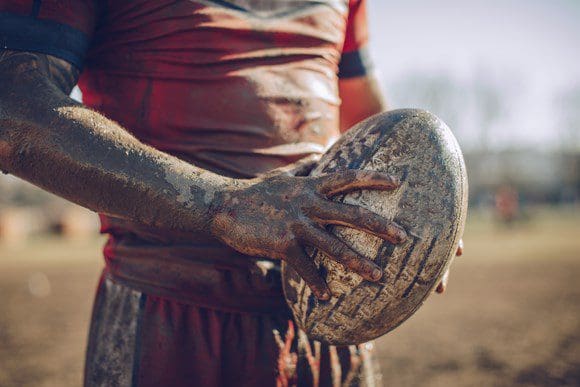A pioneering scientific study has shown that the effects of multiple concussions in rugby players continue to have an impact on their brain even in retirement. Led by a team of researchers at the Neurovascular Research Laboratory, University of South Wales, the study examined the impact of recurrent concussions sustained over two decades of playing rugby union. The findings, published in ‘Experimental Physiology’, shed light on the persistent symptoms of concussion experienced by retired players and their impaired cognitive abilities, which may increase their vulnerability to dementia later in life.
In this groundbreaking study, researchers compared retired rugby players with age, education, and fitness-matched controls who had no history of contact sports or concussions. The research identified a likely cause for these issues; a reduction in blood flow to the brain due to a decrease in nitric oxide availability. Nitric oxide is a vital chemical that helps arteries relax and deliver the necessary oxygen and glucose for proper brain function.
Professor Damian Bailey, the lead investigator of the study, said: “This is the first study to determine why contact events caused by the sheer physicality of playing rugby union is bad for the brain in the long-term. Our research provides novel insight into the long-term effects of recurrent concussions. By understanding the underlying mechanisms and biomarkers of brain health, we can better protect players throughout their careers and develop targeted interventions to improve brain blood flow and cognitive function.”
The significance of this discovery extends beyond rugby, with implications for other contact sports characterised by recurrent concussions, including boxing, mixed martial arts, soccer, American football, hockey, and horse racing. The study’s findings coincide with Professor Bailey’s contributions to the first UK-wide Concussion Guidelines for Grassroots Sport, developed in collaboration with the UK Government and the Sport and Recreation Alliance. These evidence-based guidelines aim to identify, manage, and prevent the devastating effects of head injuries and concussions in various sports.
Professor Bailey added: “One of the most striking observations from our research was the lack of concussion awareness during the active careers of these retired athletes. Players often continued playing despite experiencing classic concussion symptoms.”
To conduct the research, the team, including co-lead investigator, Dr Thomas Owens, adopted an integrated physiological approach, collaborating with a multidisciplinary team of biomedical scientists and medical specialists. They analysed biomarkers of brain health in 20 retired rugby players, aged around 64 years old, who had suffered concussions over more than two decades of playing at regional and international level. These players were compared to 21 matched controls who had no history of contact sports or concussions. The assessments included concussion-related symptoms, blood-borne biomarkers, brain blood flow measurements, and cognitive function tests.
While the study provides valuable insights, it also has limitations. The research relied on participants’ historical reports of contact and concussions, which can be subject to recall inaccuracies. Future studies with larger sample sizes and longitudinal designs are needed to track brain health changes over a player’s career and retirement, incorporating neuroimaging techniques for a comprehensive understanding of structural brain changes.
After retiring from professional sport athletes undergo lifestyle changes, like poor diet, alcohol dependency and lack of exercise, which might accelerate their cognitive decline. The researchers’ next steps will be to expand the study to recently retired rugby players to pinpoint the ‘tipping point’ when this cognitive decline accelerates. They also plan to extend their investigations to athletes from other contact sports diagnosed with “probable” chronic traumatic encephalopathy, a form of dementia associated with repetitive brain injuries. The team aims to explore potential differences in brain health between male and female athletes in various contact sports, as well as novel countermeasures such as brain cooling and targeted antioxidant therapy for enhanced protection.








Leave a Reply
View Comments